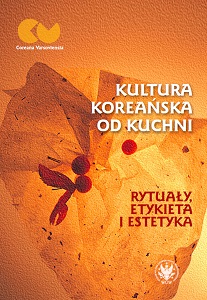Obraz jedzenia i picia w buddyjskiej obyczajowości klasztornej dawnej Korei na podstawie wybranych źródeł piśmienniczych i poetyckich
The Perception of Eating and Drinking in the Buddhist Monastery Customs of Ancient Korea: Based on Selected Literary and Poetic Sources
Author(s): Justyna Najbar-Miller
Subject(s): Cultural history, Theoretical Linguistics, Applied Linguistics, Philology
Published by: Wydawnictwa Uniwersytetu Warszawskiego
Keywords: Korean Buddhism; Buddhist poetry; temple food; eating; drinking; Buddhist customs; sacrificial offering; food ethics
Summary/Abstract: From the turn of the 20th and 21st centuries there has been an increasing interest in Buddhist temple food in South Korea. Even the Chogye School of Korean Buddhism, which is the largest Buddhist order in the country, has been taking an active part in the intensive promotion of temple cuisine. The purpose of the article, however, is not to describe the characteristics of the Buddhist monastic diet, but to take a closer look at ideals professed by Korean monks from the past. Starting with the brief history of Korean Buddhism and Korean monastic cuisine, the article presents opinions on food ethics disclosed in three Buddhist texts from different periods of Korean history: Palsim suhaeng chang (Awaken Your Mind and Practice) by Wŏnhyo (617–686), Kye ch’osim hagin mun (Admonitions to Neophytes) by Pojo Chinul (1158–1210) and Sŏn’ga kwigam (A Guide to Sŏn) by Ch’ŏnghŏ Hyujŏng (1520–1604). Also, it examines selected fragments of classical Buddhist poetry from the times of the Koryŏ and Chosŏn dynasties. The analysis of literary and poetic sources helps to constitute a model of a Buddhist ascetic who elevates the benefits of religious practice far beyond the worldly pleasures of eating and drinking.
Book: Kultura koreańska od kuchni. Rytuały, etykieta i estetyka
- Page Range: 121-146
- Page Count: 26
- Publication Year: 2021
- Language: Polish
- Content File-PDF

